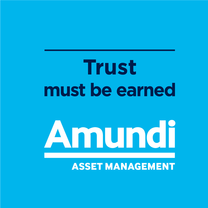Newsroom
Cross Asset - February 2019 - Investment Strategy
United Kingdom, February 4, 2019

After a tough December, which led to an abrupt valuation reset, risk assets rebounded in the first weeks of the year, boosted by a market-sympathetic turn in Fed rhetoric and an increased optimism on trade negotiations. As the current reasons for optimism should be confirmed, we believe it is time to re-approach the areas of risk assets where the correction has brought value back, especially in emerging markets. In our view, investors should start 2019 with a disciplined approach, but also have the courage to look beyond short-term noise in search for long-term value. The four areas to watch are:
- Economic outlook: Signals of a mild deceleration in global growth are apparent. We cut our US growth expectations for 2019 and 2020, with potentially more revisions still possible down the road. However, we do not expect a recession (at least for the next 18 months) and buoyant labour markets should continue to support personal consumption. The EU economy, while slowing, should remain resilient, helped by loose monetary policy and some fiscal loosening (visible in Germany, France and Italy, for different reasons). China’s soft landing has so far been well managed, with the government very proactive on policy, and EM growth showing signs of stabilisation (although with divergences). Yet, risks regarding global growth are skewed to the downside, in our view, and the market – also alerted by more dovish Fed rhetoric – will closely watch the forward-looking indicators (eg, PMIs – disappointing) before removing recession risk from the radar.
- Fed policy: The Fed’s communication strategy now seems to be more sensible to market volatility. With the Fed abandoning any pre-set policy path, and likely ending the tightening process in H1 (we now expect one hike in 2019), upside pressure on interest rates looks to be fading and the idea of central bank (CB) liquidity drying up could be of less concern than feared during the year-end blues.
- Earnings: This could be a headwind for risk assets. After a strong increase over the past two years, EPS growth is expected to decline sharply in 2019, due to a deceleration in global GDP growth, fading impacts of US tax reform, declining sector contributions from oil and commodities, and rising labour costs. But most bad news already seems to be priced in as confirmed by the more muted reactions to negative news.
- Trade disputes: Progress in trade negotiations is key. The direction towards cooperation seems clearer, encouraged by the weaker economic activity in China, with spillovers in the US which are pressuring the leaders to seek solutions. But markets will require tangible actions before repricing lower trade risk.
In addition, we continue to maintain a strong long-term awareness of the structural fragilities of the current economic/ political/social framework. Long-term challenges remain: the China-US relationship; the Chinese delicate soft landing phase; DM CB with little room for manoeuvre to fight recessions; global debt at skyrocketing levels; global growth engines losing steam; and rising inequalities: each of these factors, all the more if combined together, represent a recipe for social unrest. Last year was a period focused on the sequence of repricing in asset classes: EM first, EU equities second, US equities and DM credit at the end. We are now approaching a new sequence when some asset classes will bottom out (starting with EM) while some others can still experience some further repricing or liquidity issues (low-quality debt). In our view, investors seeking to build resilient portfolios should increase liquidity buffers, focus on valuations, and identify the asset classes that could offer interesting entry points in order to start rebuilding some risk exposure in asset allocation.
Expert
Vincent has been Group Chief Investment Officer since February 2022. Previous to that, he was the Group Deputy CIO of Amundi since 2015. He is a member of the Globa[...]
Read moreAbout Amundi
About Amundi
Amundi, the leading European asset manager, ranking among the top 10 global players[1], offers its 100 million clients - retail, institutional and corporate - a complete range of savings and investment solutions in active and passive management, in traditional or real assets. This offering is enhanced with IT tools and services to cover the entire savings value chain. A subsidiary of the Crédit Agricole group and listed on the stock exchange, Amundi currently manages more than €2.3 trillion of assets[2].
With its six international investment hubs[3], financial and extra-financial research capabilities and long-standing commitment to responsible investment, Amundi is a key player in the asset management landscape.
Amundi clients benefit from the expertise and advice of 5,600 employees in 35 countries.
Amundi, a trusted partner, working every day in the interest of its clients and society
Footnotes
- ^ [1] Source: IPE "Top 500 Asset Managers" published in June 2024 based on assets under management as of 31/12/2023
- ^ [2] Amundi data as at 31/03/2025
- ^ [3] Paris, London, Dublin, Milan, Tokyo and San Antonio (via our strategic partnership with Victory Capital)
Footnotes




